Build your own solar power generator is a practical and educational DIY project that allows you to get directly involved in the process of converting renewable energy. Not only does this project help you understand how key components such as solar panels, solar controllers, batteries, and off grid inverters work, but you can also actually experience the process of converting solar energy into electricity. With this DIY project, you can create a small solar power system that is large enough to power small appliances in your home or outdoor activities.
Whether you're looking to reduce your energy bills, have an interest in renewable energy technology, or simply want to complete a challenging craft project, a homemade solar power generator is a worthwhile option to try. In this article, PowerHome will guide you on how to build your solar power system from scratch, step-by-step, so you can enjoy the fulfillment of being self-sufficient. Often used by people for picnics, outdoor activities, adventures, and other purposes, portable solar generators are an integral part of building an off grid power station. Finished solar generators are more expensive, so if you're confident in your do it yourself abilities, you can try DIY solar generators after purchasing the parts.
Brief Description
A solar generator is a device that utilizes solar energy to convert into electricity by capturing sunlight through solar panels and converting it into direct current. This type of generator usually consists of solar panels, solar charge controllers, batteries and inverters to form a complete solar power system. The portable solar panel is the heart of the system and it is responsible for collecting solar energy and converting it into electricity. The solar controller is used to regulate the charging and discharging process of the battery to prevent it from being overcharged or overdischarged. The batteries are used to store electricity so that they can supply power even when there is no sunlight. The role of the inverter is to convert the DC power into AC power for home or commercial use.
The advantage of a solar energy generator is that the energy is renewable and environmentally friendly. It generates clean, renewable energy, reduces dependence on fossil fuels and lowers carbon emissions. As technology advances and costs come down, solar power has become the energy solution of choice for more and more homes and businesses. Whether on rooftops in cities or in remote areas, solar power generators can provide a stable and reliable supply of electricity, demonstrating a wide range of application potential and development prospects. Would you like to build your own solar power system with your own hands? Explore our "How to DIY" page for detailed steps and tips! Click here to start your DIY solar journey and realize your dream of self-sufficient green living step by step. Don't miss this opportunity and take action now!
Basic Parts
Conventional solar power generator consists of solar panel, battery, inverter and solar charge controller:
- Solar panel is used for absorbing sunlight.
- Battery is used for storing excess power.
- Inverter is used for converting DC power into AC power.
- Charge controller is used for controlling the current and protecting the battery.
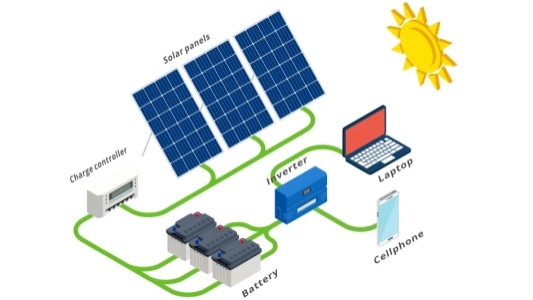
Note: Before assembling our own solar power generator, we need to prepare the above components, which are the key to make up the solar power system. We also need to have enough wires (two different colors) to put them together.
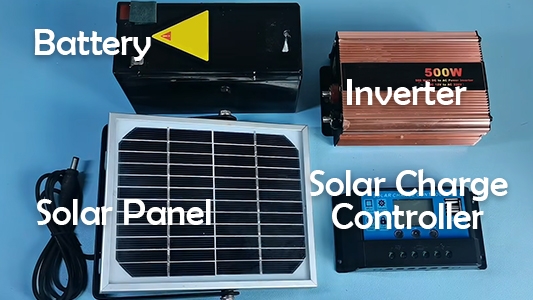
Assembling Process
Step 1: Observe the six connections underneath the solar charge controller. Of these, the leftmost two are for connecting to the solar panel, the two in the center are for connecting to the battery, and the two on the right are for the load.


(Attach the controller with four wires (two black and two red)
Step 2: Connect the inverter. Take care to connect the red wire to the positive terminal and the black wire to the negative terminal. Once connected, twist the knob.

Step 3: Connect the battery using the same technique as in Step 2.
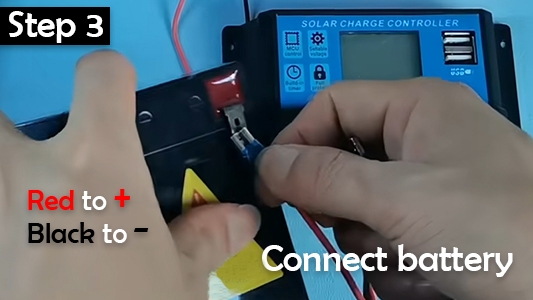
Step 4: If the connection is successful, the controller's screen will light up at this point, so check the screen.
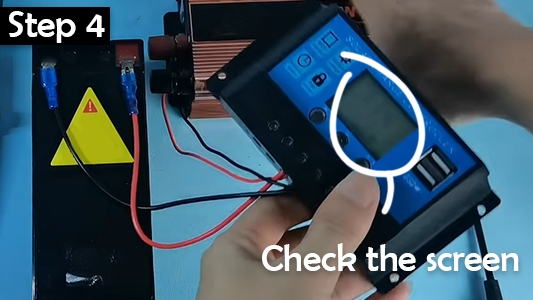
Step 5: Finally, connect the wires to the positive and negative terminals of the solar panel so that a complete solar power system is hooked up.
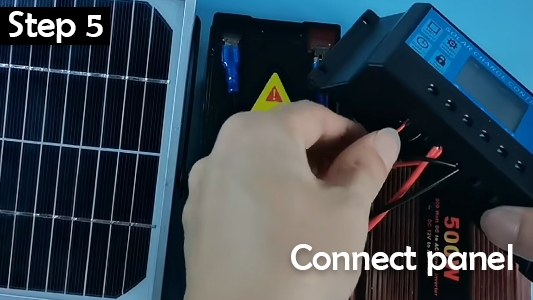
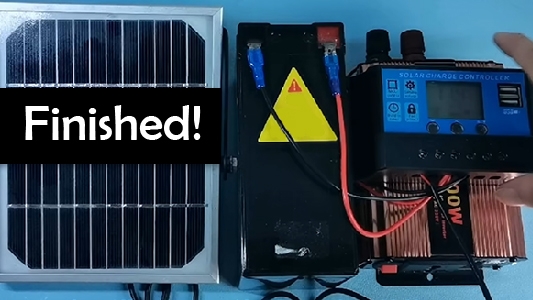
Place the solar panel on the balcony and other sunny places, connect the device that needs to be charged to the inverter and turn on the inverter switch, then it will output 110V/220V household current.
After completing the construction of a DIY solar generator, you will not only enjoy the sense of accomplishment that comes with homemade green energy, but also gain insight into the principles and process of solar power generation. This project enables you to realize the utilization of renewable energy with your own hands, making a practical contribution to an environmentally friendly lifestyle. By making your own solar power generator, you can acquire key skills such as energy conversion, circuit connection and system maintenance.
DIY solar power systems are becoming more affordable as technology develops and material costs decrease, making it easier for families and individuals to access solar power as a clean energy source. Whether you're looking to cut down on your electricity bill or pursuing a off grid lifestyle, a homemade solar power generator is a worthwhile endeavor.DIY solar power station require a certain amount of knowledge about electrical circuits. Not only that, choosing the right solar panels, batteries and inverter can be a challenge. If you want to have your own solar power plant, but don't know anything about it, PowerHome is the right place for you. We offer a wide range of finished solar generators and all the components to meet your needs at great prices.
(1).png)
(1).png)